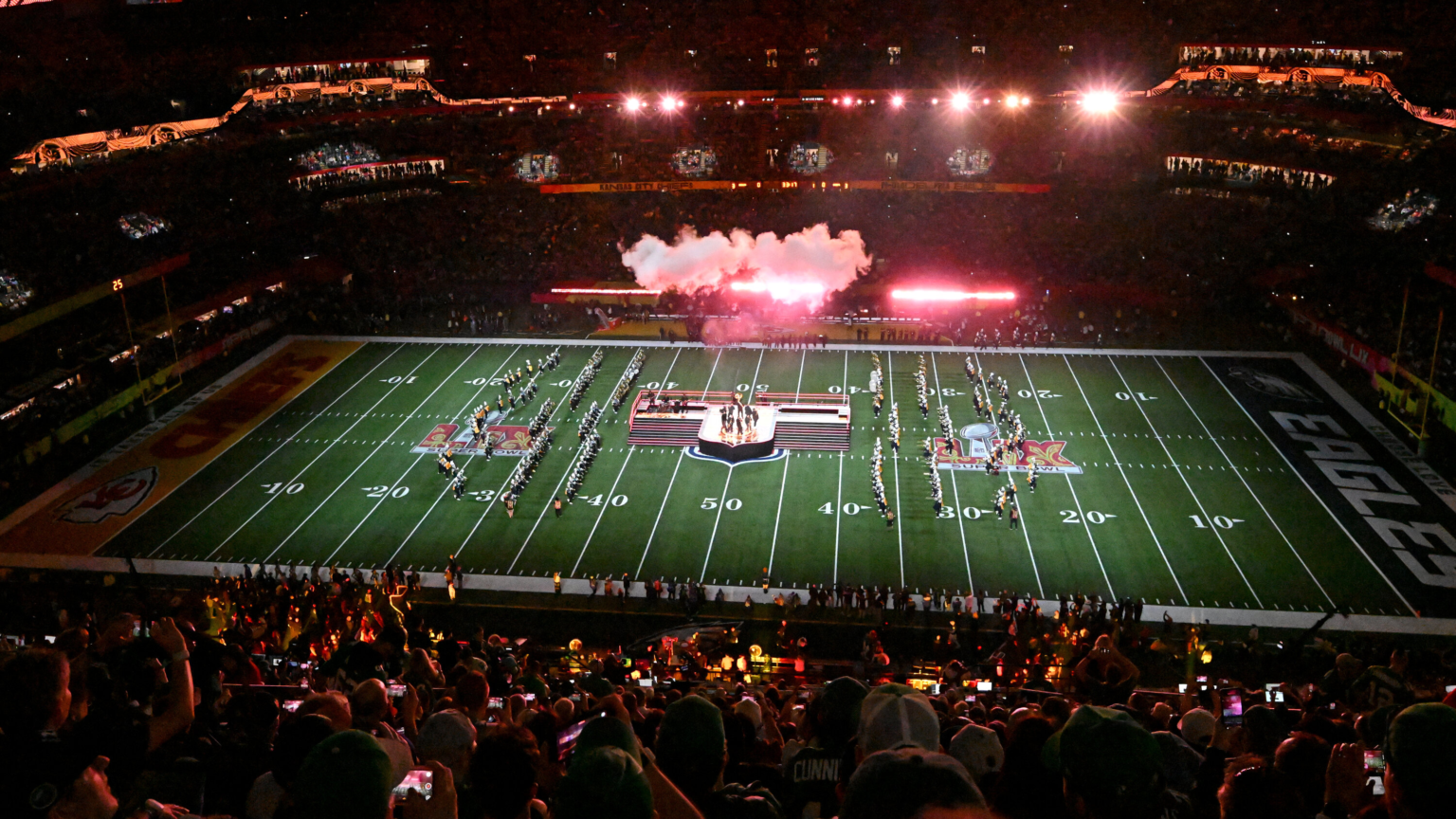The Super Bowl halftime show has long been a stage where music’s biggest stars deliver performances that captivate millions. On February 9, 2025, at the Caesars Superdome in New Orleans, Kendrick Lamar took this platform to new heights, offering a performance that was both electrifying and thought-provoking. As the first solo hip-hop artist to headline the Super Bowl halftime show, Lamar’s set was a testament to his artistry and the evolving landscape of mainstream music.
A Historic Moment for Hip-Hop
Kendrick Lamar’s selection as the halftime headliner marked a significant milestone for hip-hop. While he had previously shared the Super Bowl stage in 2022 alongside legends like Dr. Dre and Snoop Dogg, this was his moment to shine solo. The anticipation was palpable, and Lamar did not disappoint. His performance was a blend of high-energy tracks and poignant messages, reflecting his journey and the broader narrative of hip-hop’s rise to prominence.
Star-Studded Collaborations and Surprise Appearances
The halftime show was not just a solo endeavor. Lamar was joined by SZA, with whom he performed their hits “Luther” and “All the Stars.” Their chemistry was evident, and the audience was enthralled by their dynamic performance. Adding to the spectacle, Samuel L. Jackson made a surprise appearance, portraying “Uncle Sam” in a satirical role that provided both humor and commentary. Tennis icon Serena Williams also graced the stage, performing a spirited C-walk during “Not Like Us,” a nod to her 2012 Olympic celebration. These collaborations and surprises added layers to the performance, making it a multifaceted experience for viewers.
Addressing Rivalries and Social Commentary
Lamar’s performance was not without its controversies. He teased his Grammy-winning diss track “Not Like Us,” which is widely believed to target fellow rapper Drake. While he omitted some of the more contentious lyrics, the song’s inclusion was a bold statement, underscoring ongoing tensions within the hip-hop community. Beyond personal rivalries, Lamar infused his set with social and political commentary. The choreography and visuals were laden with symbolism, addressing themes of racial heritage and the unfulfilled promises to emancipated slaves. His performance was a call to action, urging viewers to remain vigilant and resist complacency in the face of societal challenges.
Critical Acclaim and Cultural Impact
Critics lauded Lamar’s halftime show as a revolutionary performance that seamlessly blended entertainment with profound messages. The Times described it as “a revolutionary performance wrapped in American show business,” highlighting its significance in cementing hip-hop’s place in the mainstream. The show’s bold statements and strategic song selection reaffirmed Lamar’s indelible presence in the music industry and his role as a cultural commentator.

The Road to the Halftime Show
The journey to this historic performance began months earlier. On September 8, 2024, the NFL, Apple Music, and Roc Nation announced Lamar as the headlining act for the Super Bowl LIX halftime show. Despite the mixed reactions, the anticipation for Lamar’s performance continued to build.
Setlist and Production Highlights
Lamar’s 13-minute set was a masterclass in showmanship. He opened with “Bodies,” setting an energetic tone that carried through the performance. The stage design was innovative, featuring a giant PlayStation controller and a 1980s Buick Regal coupe, blending nostalgia with modern aesthetics. Samuel L. Jackson’s portrayal of “Uncle Sam” provided a narrative thread, offering satirical commentary between songs. The performance also featured intricate choreography, with dancers forming symbols and shapes that reinforced the show’s themes. The set concluded with “TV Off,” featuring DJ Mustard, and ended with the words “GAME OVER” displayed through crowd wristband lights, leaving a lasting impression on viewers.
Audience Reception and Viewership
The halftime show garnered over 120 million viewers in the U.S., making it one of the highest-rated performances in Super Bowl history. Fans and critics alike praised Lamar’s ability to deliver a performance that was both entertaining and thought-provoking. Social media buzzed with discussions about the show’s symbolism, guest appearances, and its impact on the cultural landscape.
FAQs
Q: Who was the headliner for the Super Bowl 2025 halftime show?
A: Kendrick Lamar headlined the Super Bowl 2025 halftime show, making history as the first solo hip-hop artist to do so. His performance was a blend of high-energy tracks and poignant social commentary.
Q: Which special guests joined Kendrick Lamar during the halftime show?
Samuel L. Jackson made a surprise appearance as “Uncle Sam,” and Serena Williams performed a spirited C-walk during “Not Like Us.”
Q: What was the significance of Serena Williams’ appearance?
A: Serena Williams’ performance of the C-walk was a nod to her 2012 Olympic celebration.
Q: Did Kendrick Lamar address his rivalry with Drake during the performance?
A: Yes, Lamar performed his Grammy-winning diss track “Not Like Us,” which is widely believed to target Drake. While he omitted some contentious lyrics, its inclusion was a bold statement about ongoing tensions in the hip-hop community.
Q: How was the halftime show received by critics and audiences?
A: Tony The performance was widely acclaimed for its blend of entertainment and profound messaging. Critics hailed it as a revolutionary moment for hip-hop, and it garnered over 120 million viewers, making it one of the most-watched halftime shows in history.
Q: What themes did Kendrick Lamar explore in his performance?
A: Lamar’s performance delved into themes of racial heritage, societal challenges, and the unfulfilled promises to emancipated slaves. Through symbolism in choreography and visuals, he urged viewers to remain vigilant and resist complacency.
A Thrilling In conclusion, Kendrick Lamar’s Super Bowl 2025 halftime show was a landmark moment in music and cultural history. It showcased the power of hip-hop as a medium for both entertainment and profound commentary, solidifying Lamar’s place as one of the most influential artists of his generation.
To read more, Click Here

